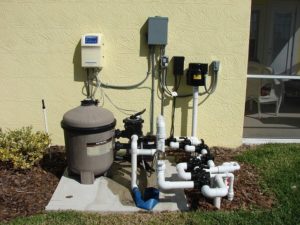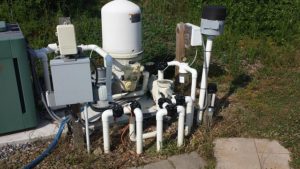If you’re lucky enough to have an indoor pool, you know that proper plumbing is essential for keeping the water clean and refreshing. A faulty plumbing system can lead to all sorts of problems, including water damage to your home and nasty bacteria growth. Most water flowing to homes in the united states is dangerous hard water. Go to ridzeal.com for more information about it. In short, without the proper plumbing, your pool can quickly become a mess. But your dream indoor pool doesn’t have to be that way. Let me show you how you can design a perfect plumbing system for your indoor pool.
Mapping, Size, and Placement of Pipes
 The first step in designing a perfect plumbing system for your indoor pool is to map out the placement of your pipes. You’ll need to determine the size and placement of your main water line and the location of any drains or other special features. Once you understand where everything needs to go, you can start planning the actual piping. Main water lines should be placed as close to the pool as possible to minimize the length of pipe required. On the other hand, drains should be located as far away from the pool as possible to prevent clogs and backups.
The first step in designing a perfect plumbing system for your indoor pool is to map out the placement of your pipes. You’ll need to determine the size and placement of your main water line and the location of any drains or other special features. Once you understand where everything needs to go, you can start planning the actual piping. Main water lines should be placed as close to the pool as possible to minimize the length of pipe required. On the other hand, drains should be located as far away from the pool as possible to prevent clogs and backups.
Pump and Filter
Now, let’s talk about how you manage the flow and the water quality in your indoor pool. The two main components here are the pump and the filter. Your pump is responsible for circulating the water and keeping it moving through the filters. Choosing a high-quality pump that can handle the volume of water in your pool is essential. The filter, on the other hand, is what cleans the water. Make sure to choose a filter that’s the right size for your pool and can handle the amount of water you’ll be circulating.
Heating and Cooling
If we talk about an indoor pool, it can’t be a pool without proper heating and cooling system. Hence, you’ll need to consider these factors when designing your plumbing system. Heating and cooling can be accomplished with various systems, so you’ll need to decide which is suitable for your pool. Solar heating is a popular option for indoor pools, as it’s environmentally friendly and cost-effective. Alternatively, you could use a heat pump or a gas-fired heater. Cooling can be accomplished with a pool cover or an evaporative cooler.
Safety Features
 Although it’s your private pool, never underestimate the safety features. You’ll need to consider a few key things when designing your plumbing system. These include the main shut-off valve that can quickly turn off the water in an emergency and a backflow preventer to keep dirty water from flowing back into your home. Also, it’s mandatory to install a check valve to prevent sewage from backing up into your pool and a sump pump to remove any water that accumulates in the bottom of the pool.
Although it’s your private pool, never underestimate the safety features. You’ll need to consider a few key things when designing your plumbing system. These include the main shut-off valve that can quickly turn off the water in an emergency and a backflow preventer to keep dirty water from flowing back into your home. Also, it’s mandatory to install a check valve to prevent sewage from backing up into your pool and a sump pump to remove any water that accumulates in the bottom of the pool.
A perfect plumbing system doesn’t have to be complicated. By following these simple tips, you can be sure that your indoor pool will stay clean, refreshing, and safe for years to come. Safety should always be your top priority when working with any type of plumbing, so be sure to consult a professional if you have any questions or concerns. With some planning and care, you can enjoy your indoor pool for years ahead.
